The Camino Francés – Top 10 Sights
The Camino Francés from St. Jean Pied de Port to Santiago de Compostela covers almost 800 kilometres. Motivation to walk the Camino varies from person to person; as does how they experience the pilgrimage. Often it is a unique and personal journey. Not one person truly walks or perceives the Camino in the same way.
Here are some of our top 10 sights (although the list could very well be our top 100) along the Camino Francés. We think you should try to experience some of these on your journey.
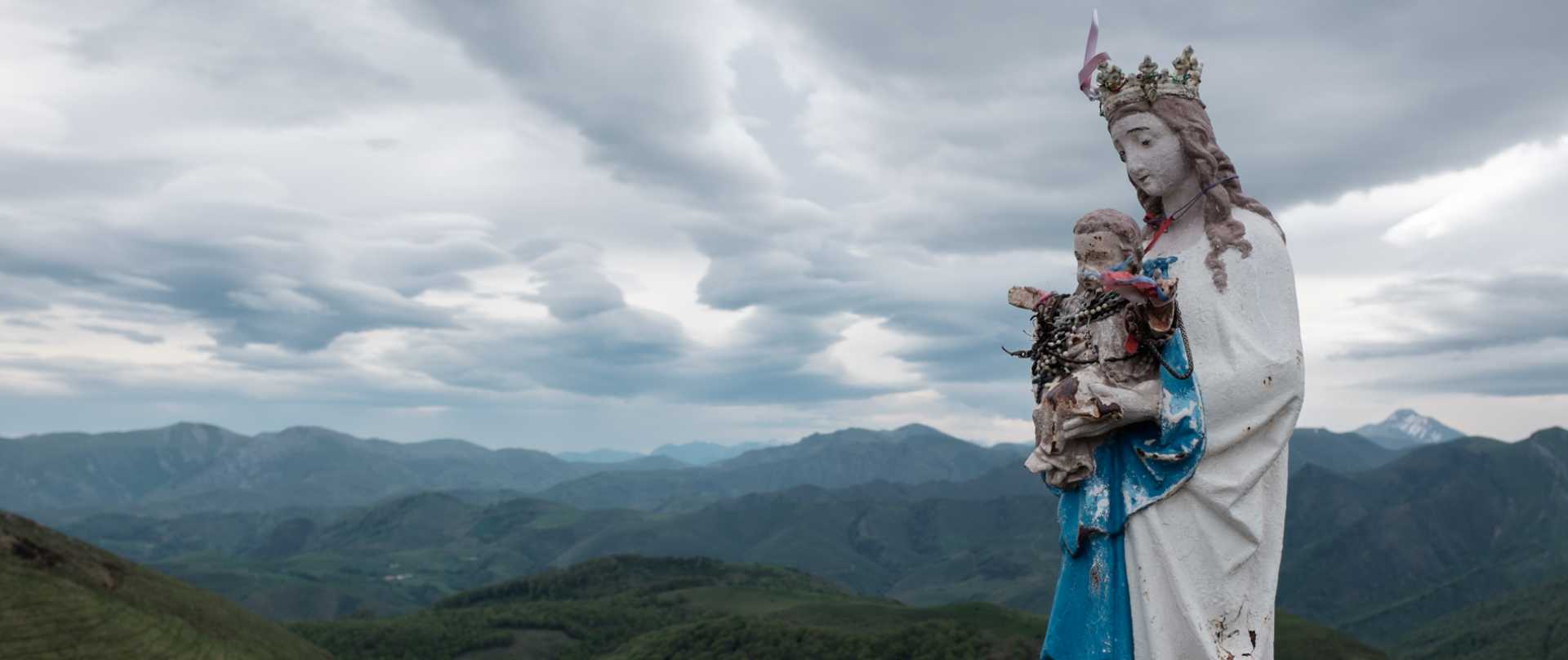
1. Vierge d´Orisson
By far one of the most challenging walks on the Camino Francés is day 1 from St Jean Pied de Port over the Pyrenees into Roncesvalles. You go from 170 meters to 1450 meters in height in about 20 kilometers. You are literally climbing over a mountain. About half way up the climb you reach the point of Pic D’Orisson, an altitude of 1095 meters.
Sitting slightly off the Camino is a statue of the Virgin Mary with her child in her arms. It is believed she was brought from Lourdes to watch over the pilgrims climbing the mountain.
Depending on the weather you encounter at the top and how your body is feeling, this backdrop is one that can leave an everlasting impression. Religious or not, after battling that difficult uphill climb and realizing only your legs and strength will get you to Santiago, Mary offers a calming and reassuring comfort that you will not be alone on your Camino.
2. Alto del Perdón
About 13 kilometers after you leave the lively city of Pamplona, there is a decent climb to the Alto del Perdón. In Spanish, this means the “height of forgiveness.”
As you reach the top, you are surrounded by large wind turbines and the famous structure of pilgrims walking to Santiago de Compostela. Written on the structure is the phrase – “donde se cruza el camino del viento con el de las estrellas.” Where the path of the wind meets the stars.
The statue was placed in 1996 and represents the progression of pilgrims throughout the centuries. The first pilgrim depicts the start of the Camino as he appears to be looking for the Way. In front of him is a group of three pilgrims showing the rise in popularity. Next, are tradesmen on horseback showing how the medieval merchants utilized the trail. Following these pilgrims comes a large space. This space depicts the decline of the pilgrimage due to politics, religion and social troubles. At the end, are two modern pilgrims, presenting the renewed interest in the Way.
Once you get to the top, do check out the art. However, our favorite reason to climb up the 790 meters is to have a bird’s eye view of Pamplona behind you. You realize just how far you have come. With a slight turn, you then see the upcoming towns scattered to the front of you. Reminding you how far you must still go.
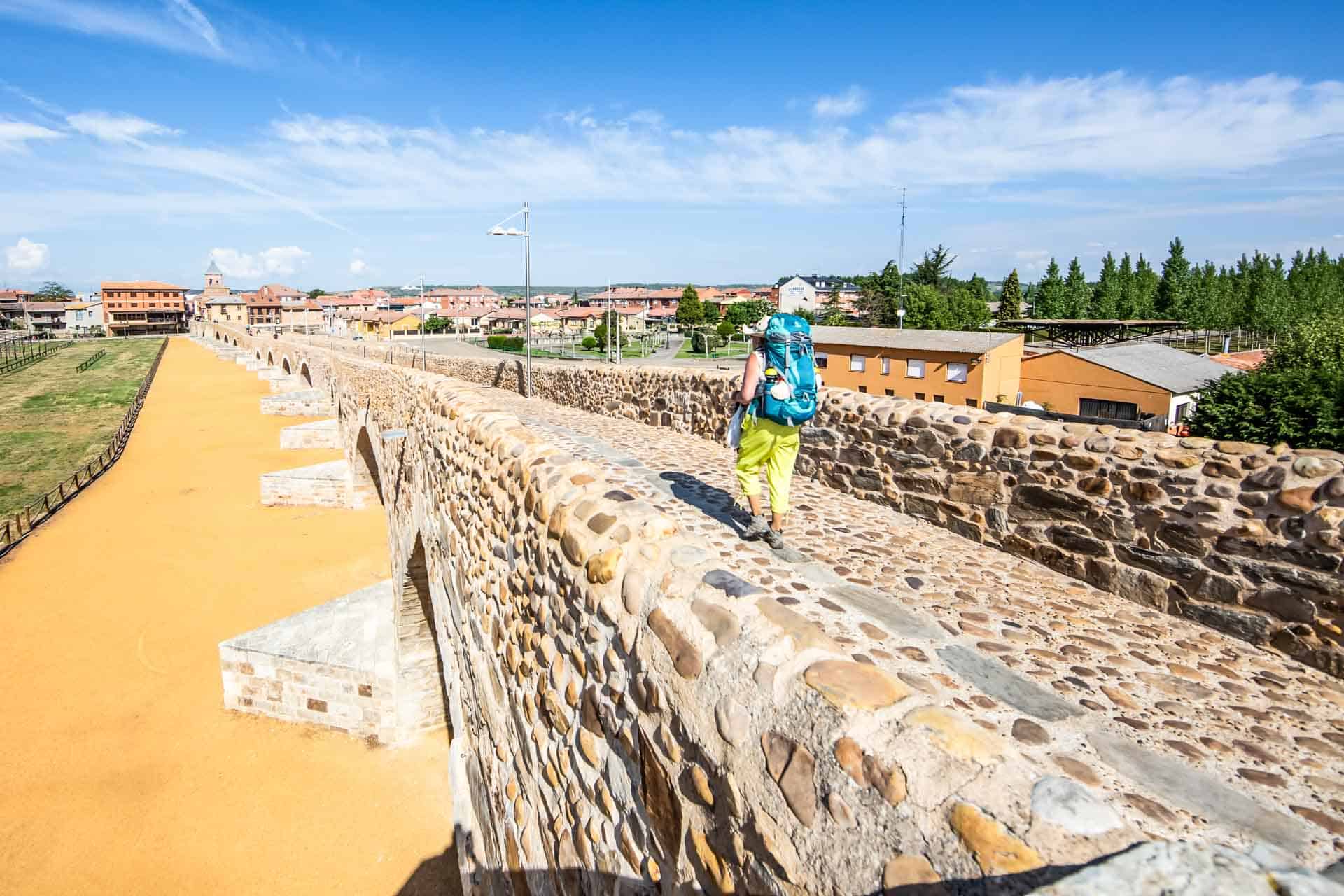
RCI Photography.
3. Puente de Hospital de Orbigo
The old Orbigo Puente is a 13th-century bridge located between the cities of Leon and Astorga. It is the longest bridge on the Camino at 204 meters in length (approximately 670 feet) and has 20 arches. The bridge also carries the legend of El Paso Honroso, a medieval love story.
The 15th century knight, Leonés Don Suero de Quiñones was in love with a lady by the name of Doña Leonor de Tobar. Leonor did not feel the same way towards the knight. He decided to wear an iron collar around his neck as a symbol of being enslaved by his love for her.
To impress Leonor, he told the King he would defeat 300 men in jousting over the bridge. Only when he had accomplished this would he remove his iron collar. Knights traveled from all over Europe to take their try at defeating the knight.
Over a month, the knight managed to break nearly 200 lances. The men who were judging the contest decided that was enough and removed the iron collar from his neck. We aren’t sure, but in our story he gets the girl.
Now, each year since 1997, the Fiesta de las Justas del Paso Honroso takes place with jousting in commemoration of the legend.
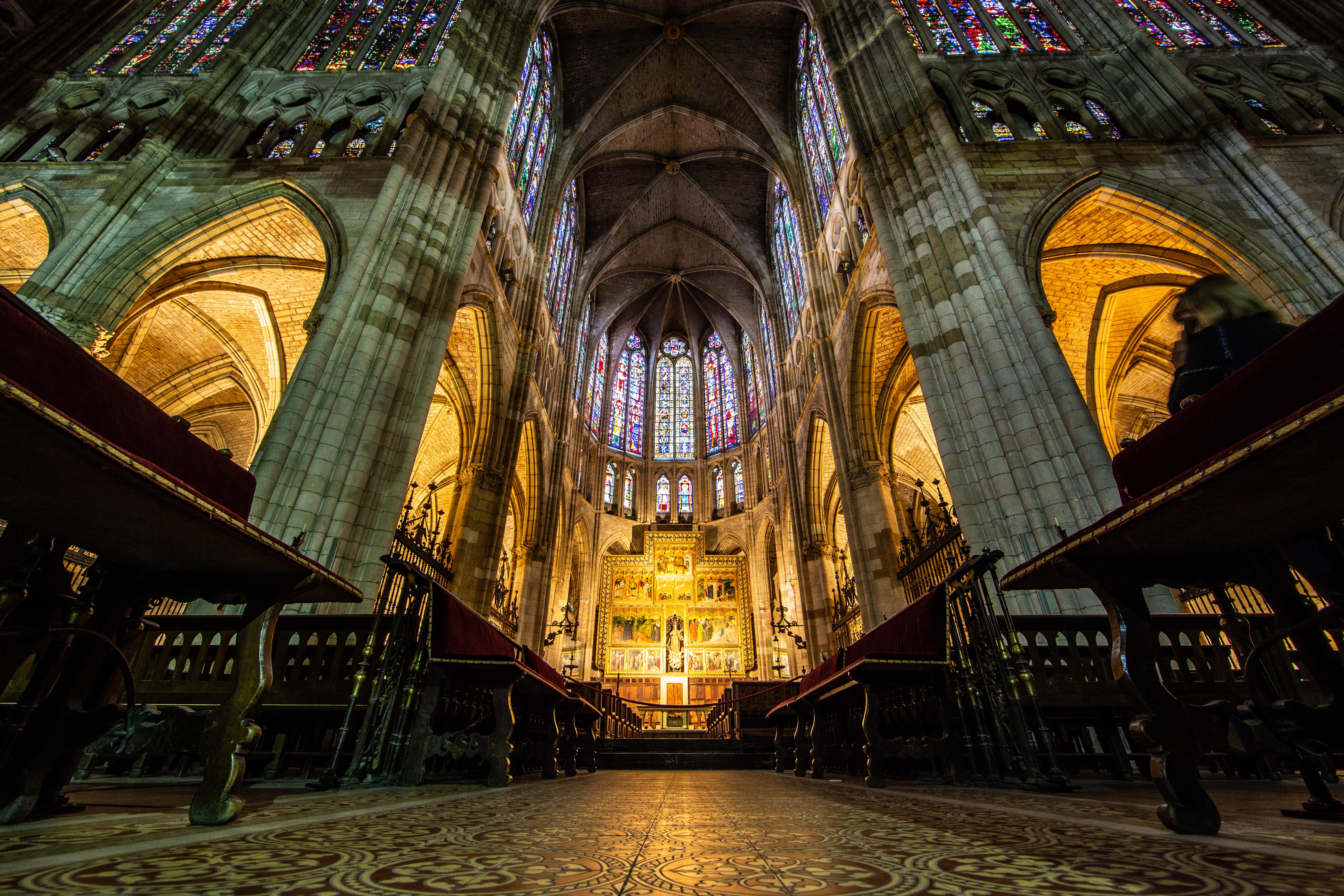
RCI Photography
4. The House of Light or the Pulchra Leonina
The Cathedral in Leon is the third Cathedral to be commissioned in the city. The first was originally built in the 10th Century by King Leon Ordono. Upon the King’s death, his sister began a new building representing a Romanesque style. Finally, the current structure was started in the 13th Century displaying the Gothic influence of the time.
The proper name of the cathedral is Santa María de León Catedral. It’s nickname is the House of Light or the Pulchra Leonina. It has this name due to the striking stained glass windows. There is over 1,764 square meters of surface, most of that being windows. Thus, it is one of the oldest and best conserved collections of stained glass throughout Europe.
The completion of the windows did not take place until the 15th Century. There are 130 windows, three of those being large rose windows. Many suggest the quality of the windows was well before it’s time. This is due to the amount of light the designers could capture. Over the centuries some of the original windows have been lost. A restoration project took place in the 19th century to bring life and light back into some of the stained glass windows that were lost.
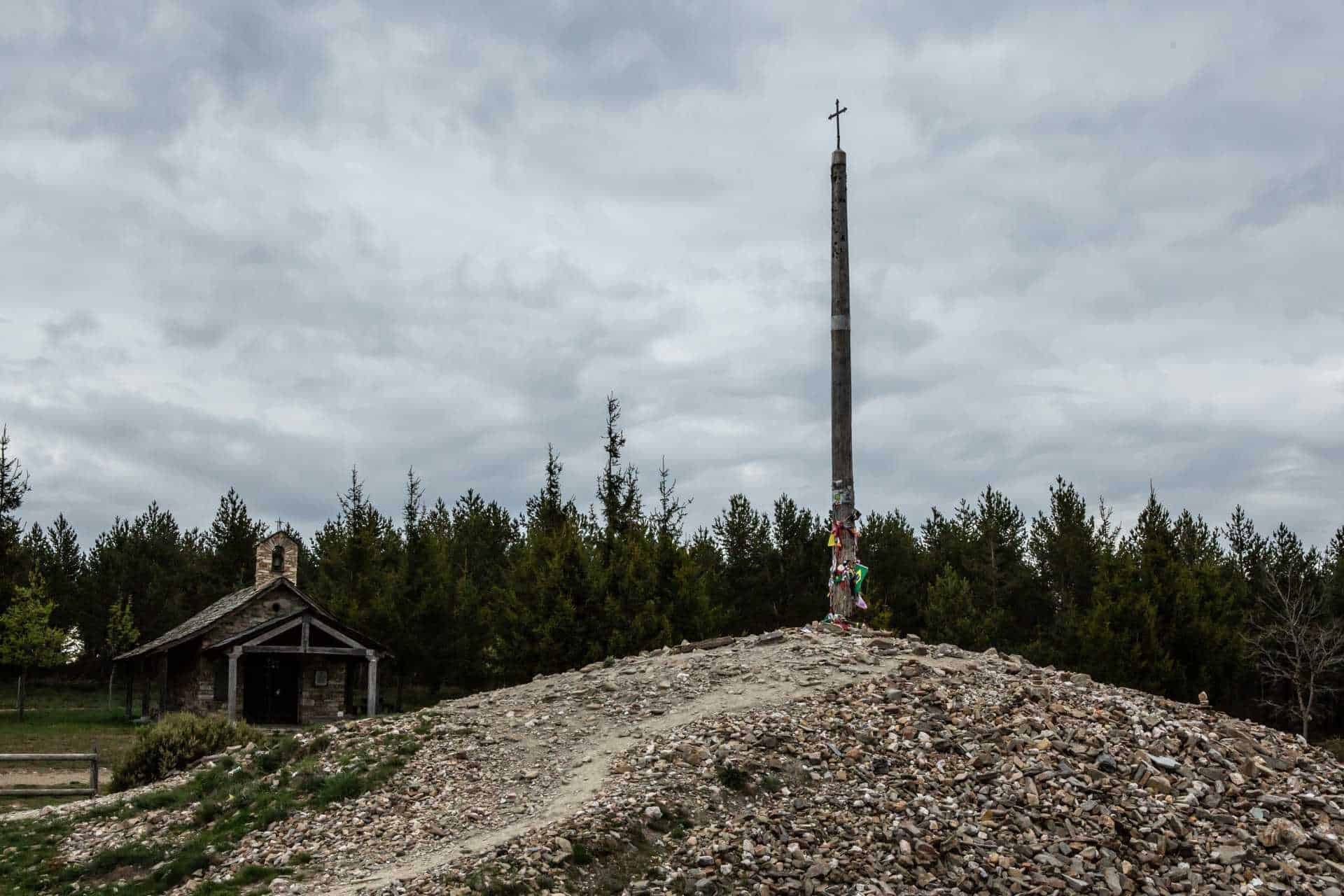
RCI Photography
5. La Cruz de Ferro
Rabanal del Camino is an ancient town along the Camino Francés. It is thought that the Knights Templar were present in the town from the 12th Century. The Knights Templar existed for nearly two centuries during the Middle Ages and consisted of the most powerful western Christian military orders. They would ensure pilgrims could safely pass over the mountain from Rabanal del Camino.
About 7 kilometers past this town, stands La Cruz de Ferro or the Iron Cross. This is probably one of the most known symbols of the Camino de Santiago on the French Way. Since the 11th century pilgrims along the Camino de Santiago have left stones at the Cruz de Ferro to symbolize the sins that pilgrim committed. Leaving the rock absolves them of these sins. Today, people also leave prayers and well-wishes at the bottom of the Iron Cross. You can come with something to leave; or you can collect something on your walk to the Iron Cross.
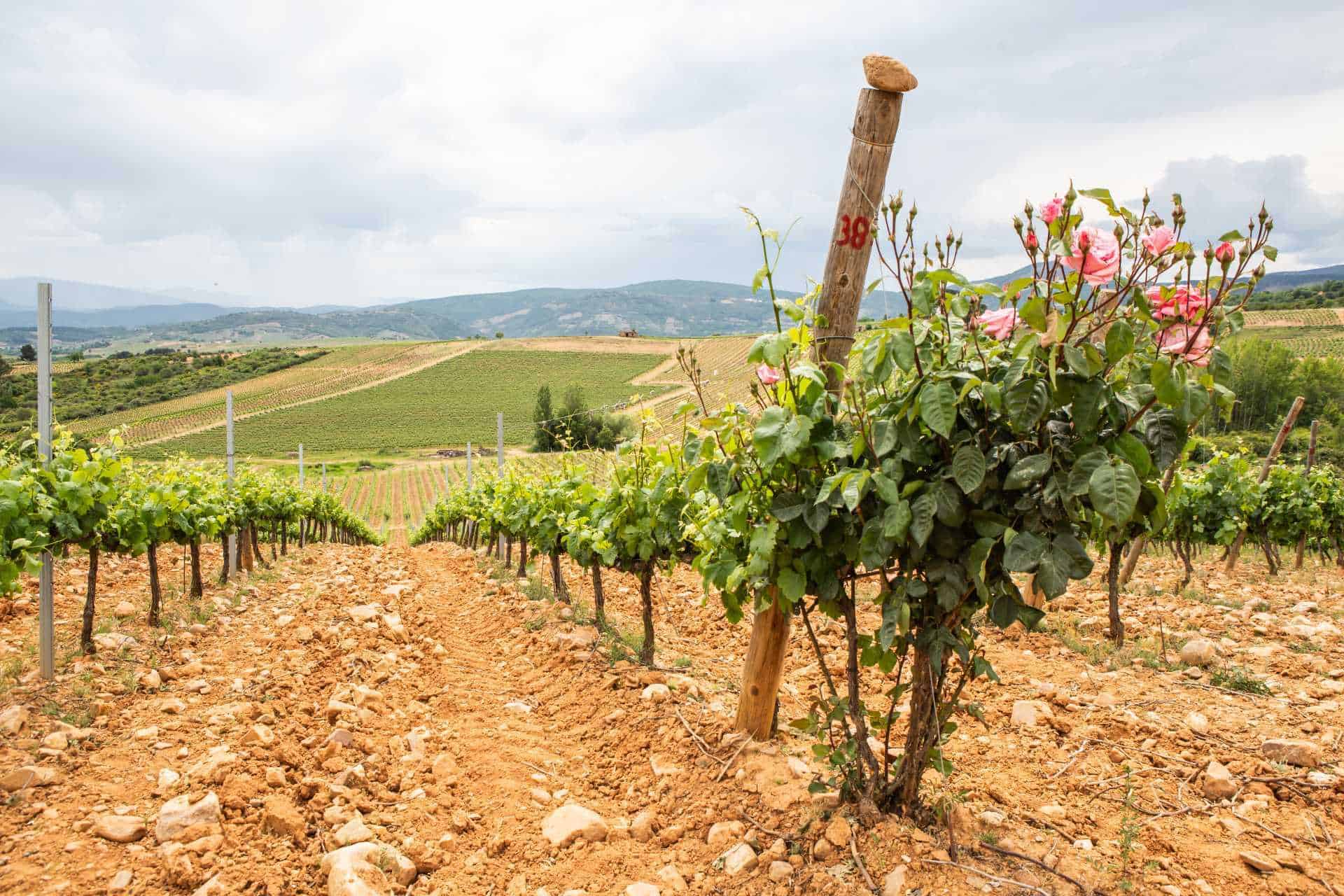
RCI Photography
6. Vineyards of the Camino
Spain has been producing wine for as long as it has been inhabited. It is the 3rd largest wine producing country in the world, following France and Italy. Due to its geographical make-up, Spain produces a wide variety of wines.
Along the Camino Francés you walk past many wine areas of the North. Before you reach the city of Logroño you are in the autonomous region of Navarra. When you arrive at Logroño you are in La Rioja, one of the most famous wine regions in Spain. Both regions produce red wines as Garnacha and Tempranillo.
In Leon you are closer to the region where sparkling wine is heavily produced. As you get closer to Santiago de Compsotela, you are in the white wine region. Galicia, the last autonomous region of the Camino, is well known for the wine regions of Ribeira Sacra and Rias Baixas. Both regions produce a red wine called Mencia; as well as two white wines called Albariño and Godello.
Whether you drink the wine or not, walking through the vineyards is a pretty spectacular sight. A good stage to see the vineyards in Spain on the Camino Francés is from Ponferrade to Villafranca del Bierzo. You can stop along the trail and actually pop into a winery for a quick tasting. Another great place (and if you have an extra day) on the Camino Francés is to take yourself off the trail near Logroño and go visit La Rioja. Cheers!
7. Experience a Queimada
The Conxuro da Queimada is the reading of an ancient “spell” from the Galician tradition. Some say this dates to Celtic times. It is believed to have begun when Paganism was widely practiced in Galicia, the final state along the Camino de Santiago to the remains of St. James. Galicia is considered the seventh Celtic nation along with Eire (Ireland), Kernow (Cornwall), Mannin (Isle of Man), Breizh (Brittany), Alba (Scotland) and Cymru (Wales).
The incantation is read out in front of the fiery Aguardiente and set alight creating a beautiful blue flame. The person leading the spell covers their face. Historically, s/he might have to say some very hurtful or shocking things (which were being thrown into the Queimada for good riddance) about the people in the village. It was best for that person to conceal their identity.
The idea of this ritual is to distance oneself from bad spirits and bring yourself closer to the good ones. One would be encouraged to throw any negative thoughts, experience or idea into the pot during the spell. This would allow in the light of the good spirits to bring positivity into their lives. We suggest you don’t miss the chance to experience a Queimada on your journey!
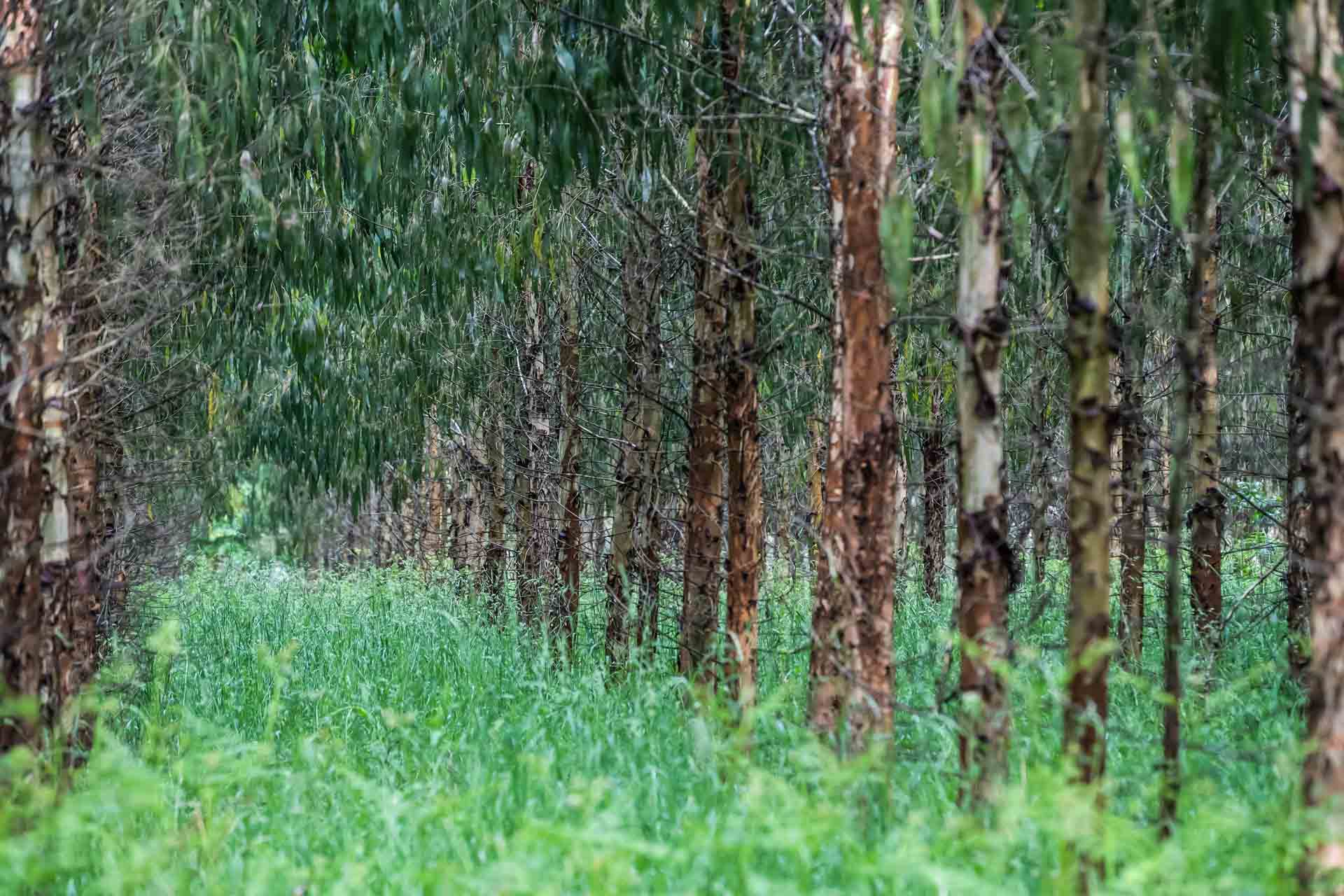
RCI Photography
8. The Eucalyptus forests
The Eucalyptus trees are not native to the Iberian Peninsula. It is reported that they were introduced to Galicia as early at 1850. Now, between two and three million acres of eucalyptus are growing in Iberia.
The Eucalyptus is a very controversial tree in Spain. They are considered a threat to the indigenous forests. These being oak and beech in Galicia. The trees are thought to take much of the water available, destroying other trees and the land. They are also thought to exacerbate the forest fires as their sap and bark are flammable. As a result, locals protest the harvesting of these trees.
The trees are harvested for paper. Other locals make their living by growing the trees for this purpose. The tree grows quickly; in about 10 years they are able to be harvested. Eucalyptus trees also have many health benefits. The oil vapors can be used as a decongestant when inhaled. Having these trees around can be very helpful in the winter season for colds. The oil is also used as an anti-inflammatory and for acne.
Putting aside the argument of the Eucalyptus in Spain, some of the most beautiful sections of the Camino Francés through Galicia is passing through the Eucalyptus forests. A favorite section to pay attention to is the 3 kilometers between Arca and Amenal. If you walk this section late in the day, you may find yourself alone with only the smell and rustle of the enchanting Eucalyptus leaves.
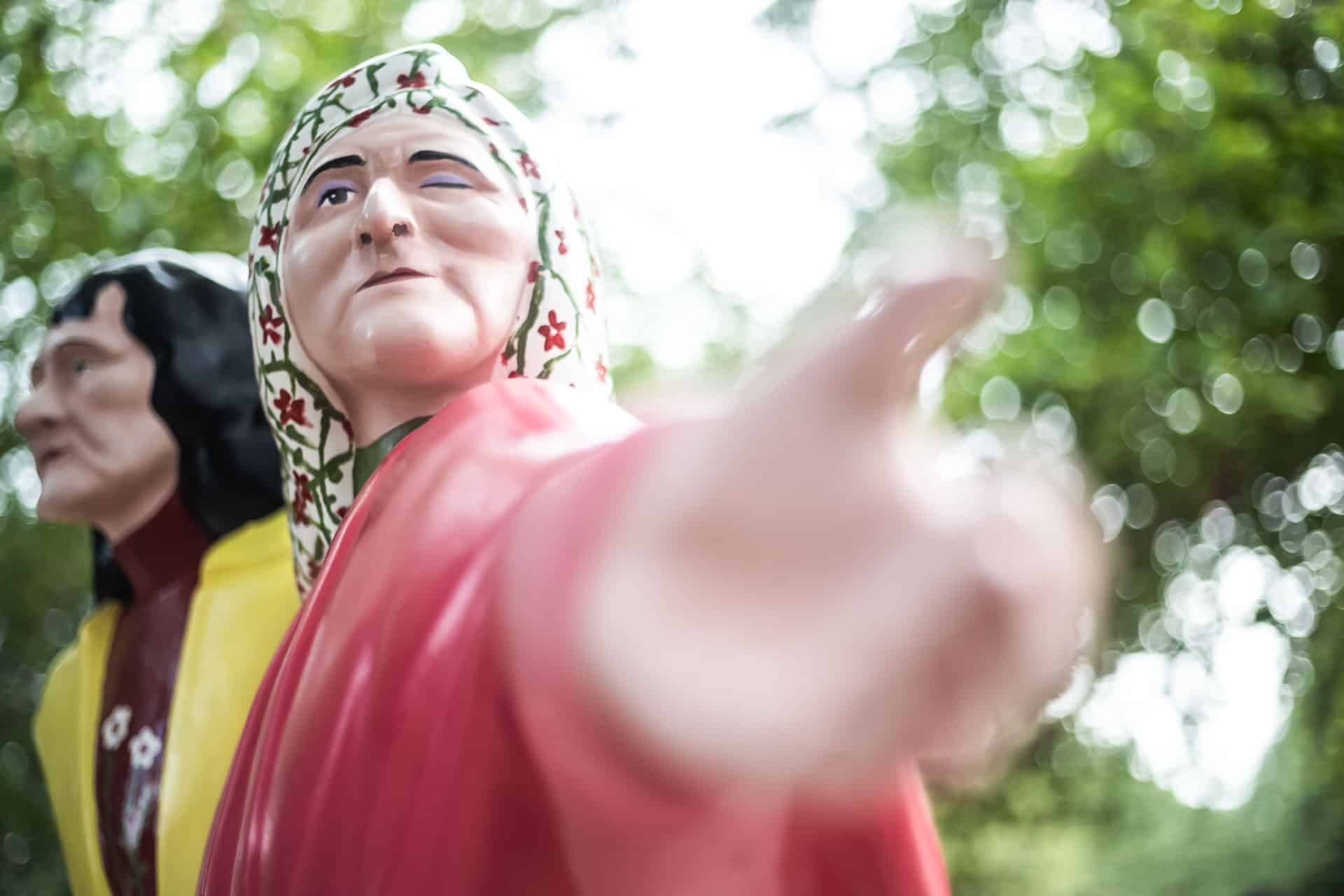
RCI Photography
9. The Two Marias of Santiago
The small park in Santiago de Compostela is called Alameda Park. At the front of the park, there are two colourful statues of the Spanish sisters Maruxa and Coralia Fanino Ricart.
During the regime of Franco, three of their brothers had an active role in the Confederacion Nacional del Trabajo. This was an organization fighting against the sovereignty of the Spanish general. The brothers were arrested and detained in the early 1950s. They experienced consistent emotional abuse, torture and excessive physical brutality. The impact of this led to the death of the women’s parents and many of the siblings.
Despite their hardship, the ladies would enter Alameda Park in Santiago de Compostela at 2 PM every day. They would be dressed in bright clothing, high heels and bright make-up. Many locals suggest the women experienced poor mental health due to the trauma which led to this exuberant behavior. Whilst others thought the women were simply trying to find some enjoyment in their troublesome life.
The Two Maria statues were laid in the local park in Santiago de Compostela by sculptor Cesar Lambera in 1994 in memory of the two women. Throughout the years a coat of fresh paint has given the ladies new and brighter clothing. We think the ladies are a great photo opt at the finish of your Camino.

RCI Photography
10. The streets of Santiago de Compostela
The first place you are likely to visit is the Cathedral when you arrive in Santiago de Compostela. This is normally followed by the Pilgrim’s Office to receive your Compostela.
As you take your final steps on the Camino de Santiago, leading into the Plaza de Obradoiro, you are walking down the very famous street, Rua de Acibecheria, or the street of Azabache. This street was once the designated street housing the only shops that sold the protective stone, Azabache, in the old town of Santiago de Compostela. The stone is jet black and when polished shines bright.
It was once highly valued due to the belief around the stone’s abilities. The stone would rid one of negative energy; as well as protect those who wear it from fear, indecisiveness and evil. Whether or not you believe the stone protects from evil, we still suggest buying a piece as it a lovely stone and makes a very pretty souvenir.
However, if you have time after your Camino, make sure you wander the streets of Santiago de Compostela. This is by far our favorite thing to do in old town. We highly suggest you do not make a plan or take a map. Simply let the smells and sounds lead you through the small alleyways and cobbled stone roads. Whether you end up tasting the most well-known Tortilla Espanola on Rua Nova, or discovering churros and chocolate on Rua do Preguntoiro, you will not be disappointed.
*Most photos were taken by RCI Photography.


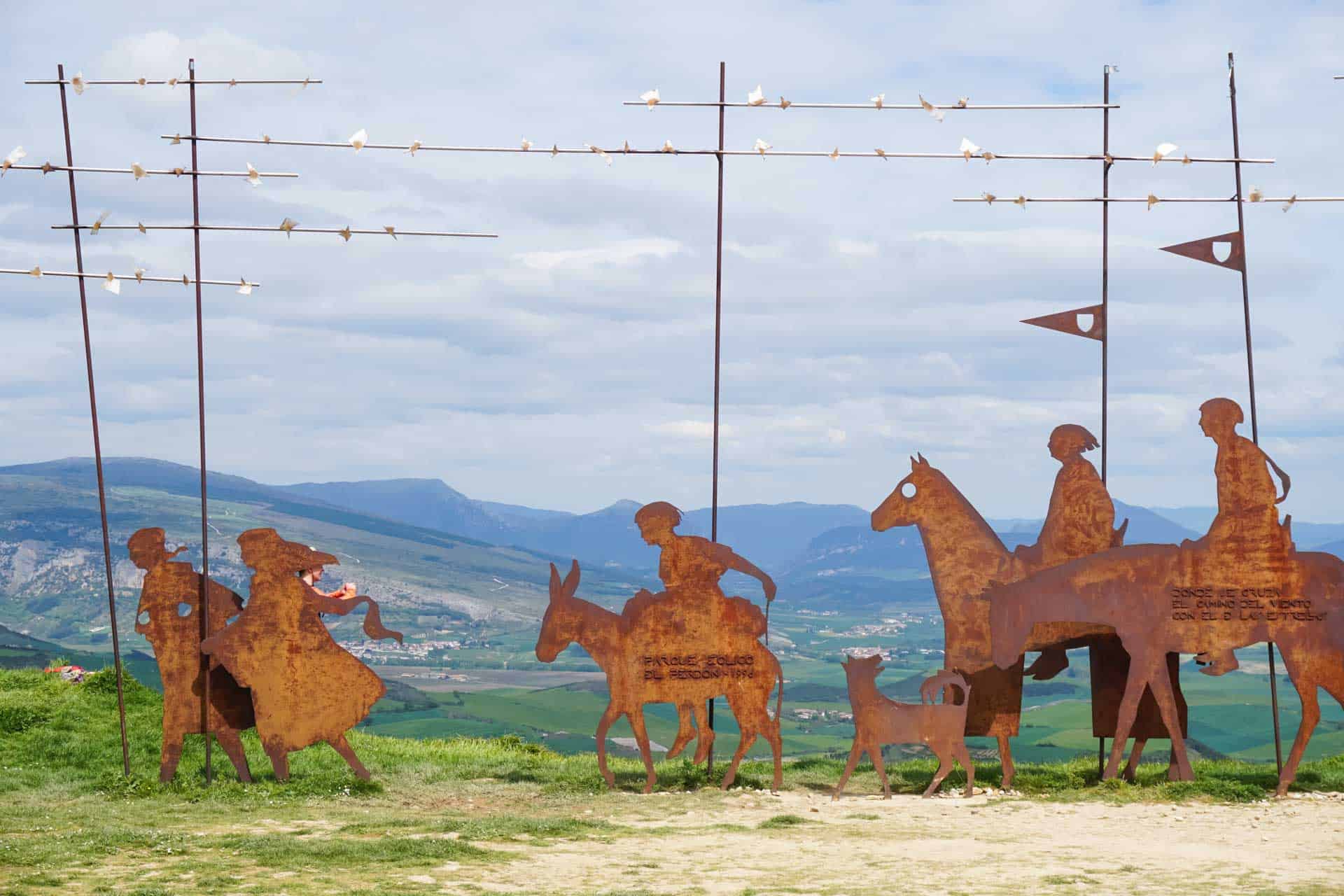
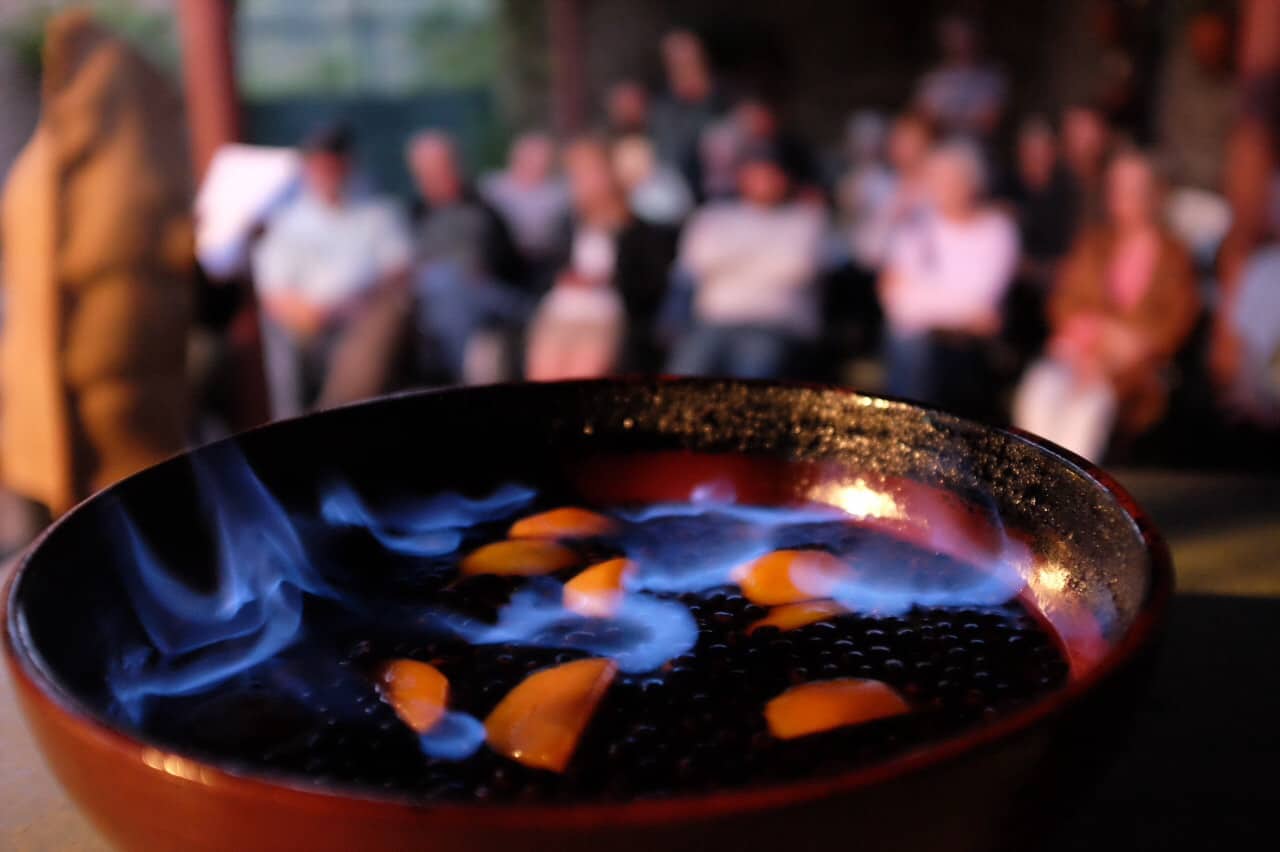
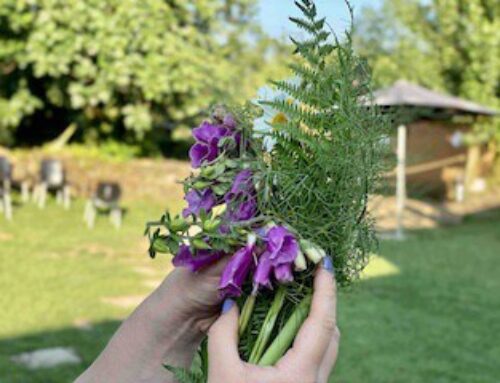
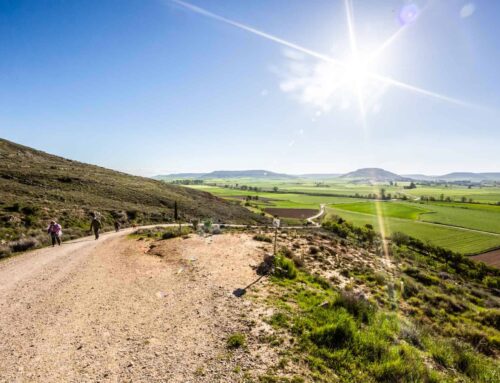
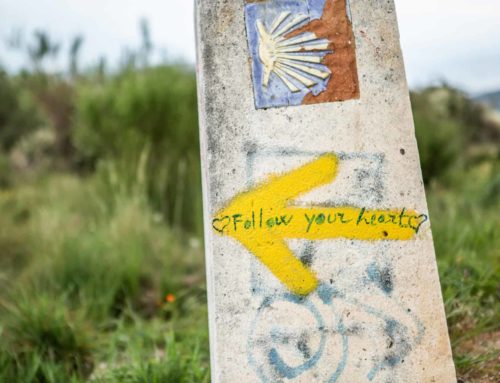
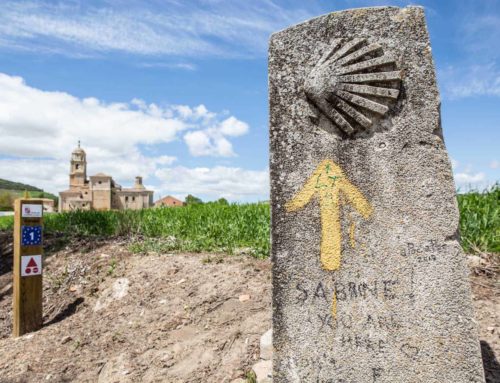
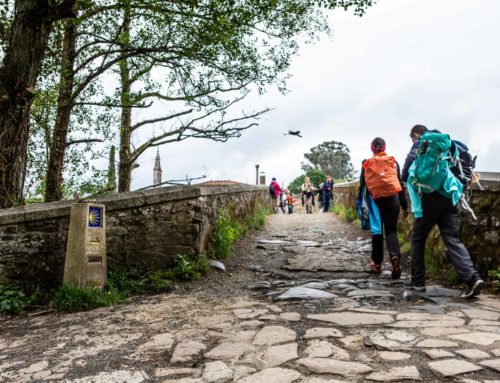
Leave A Comment